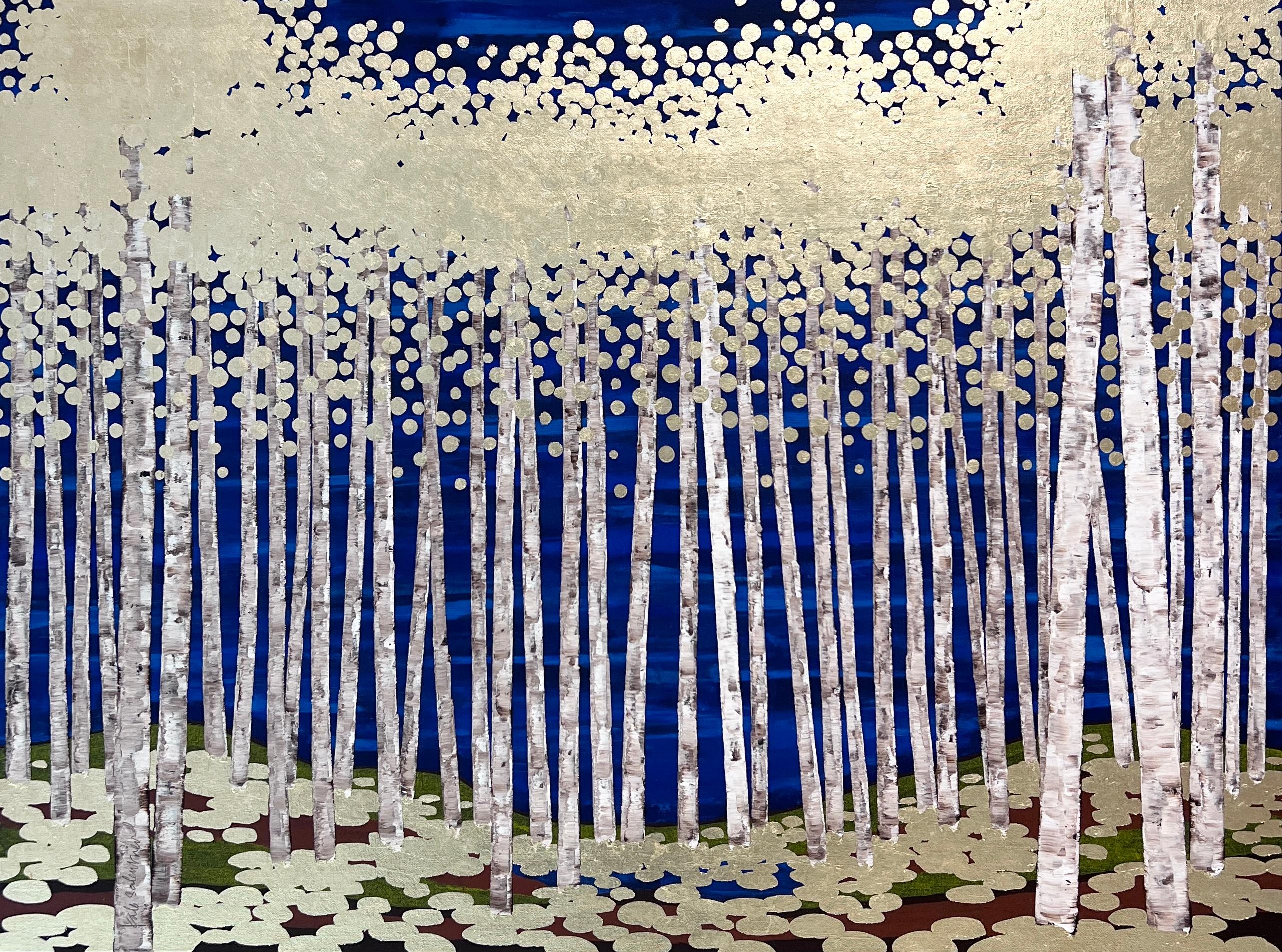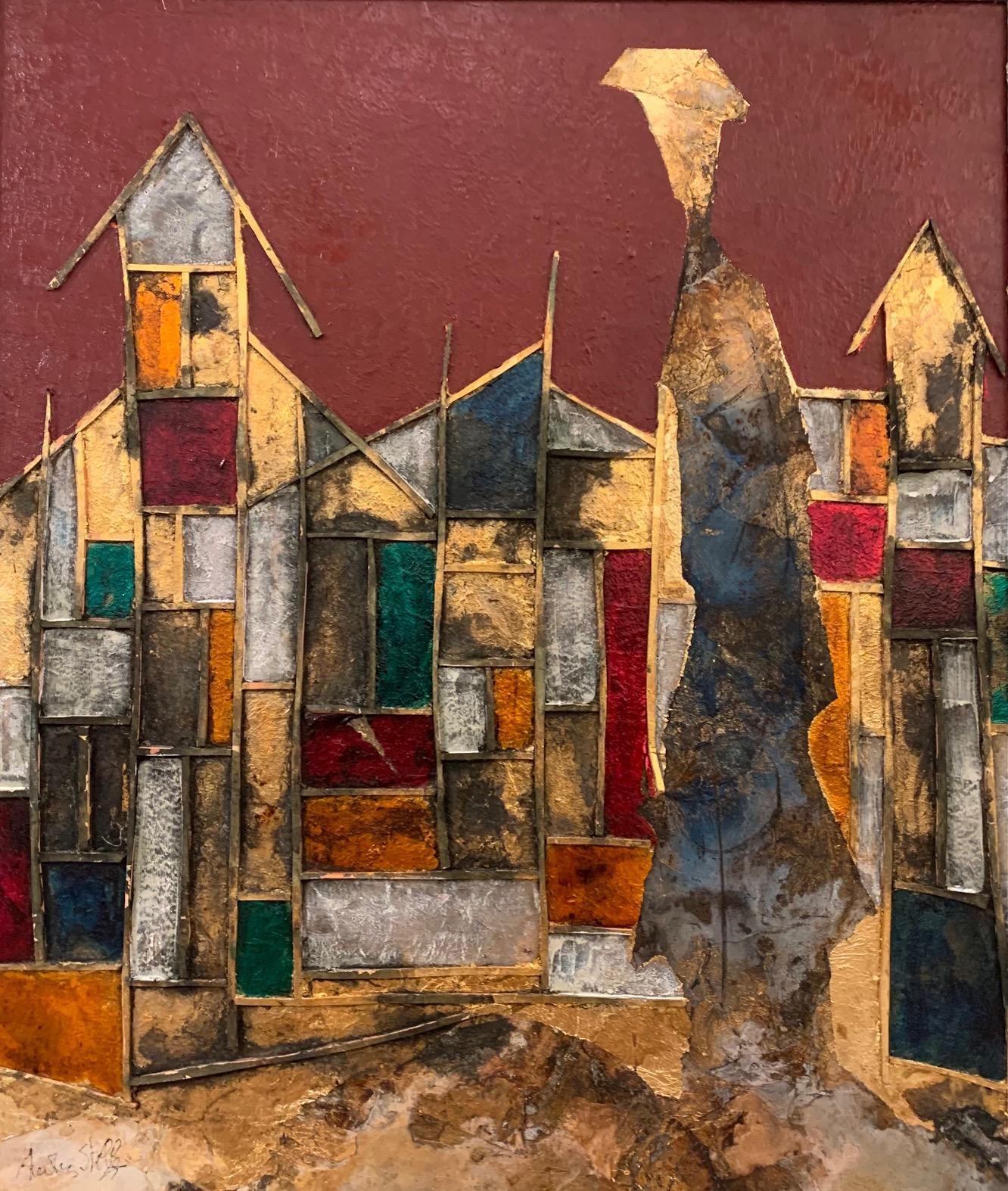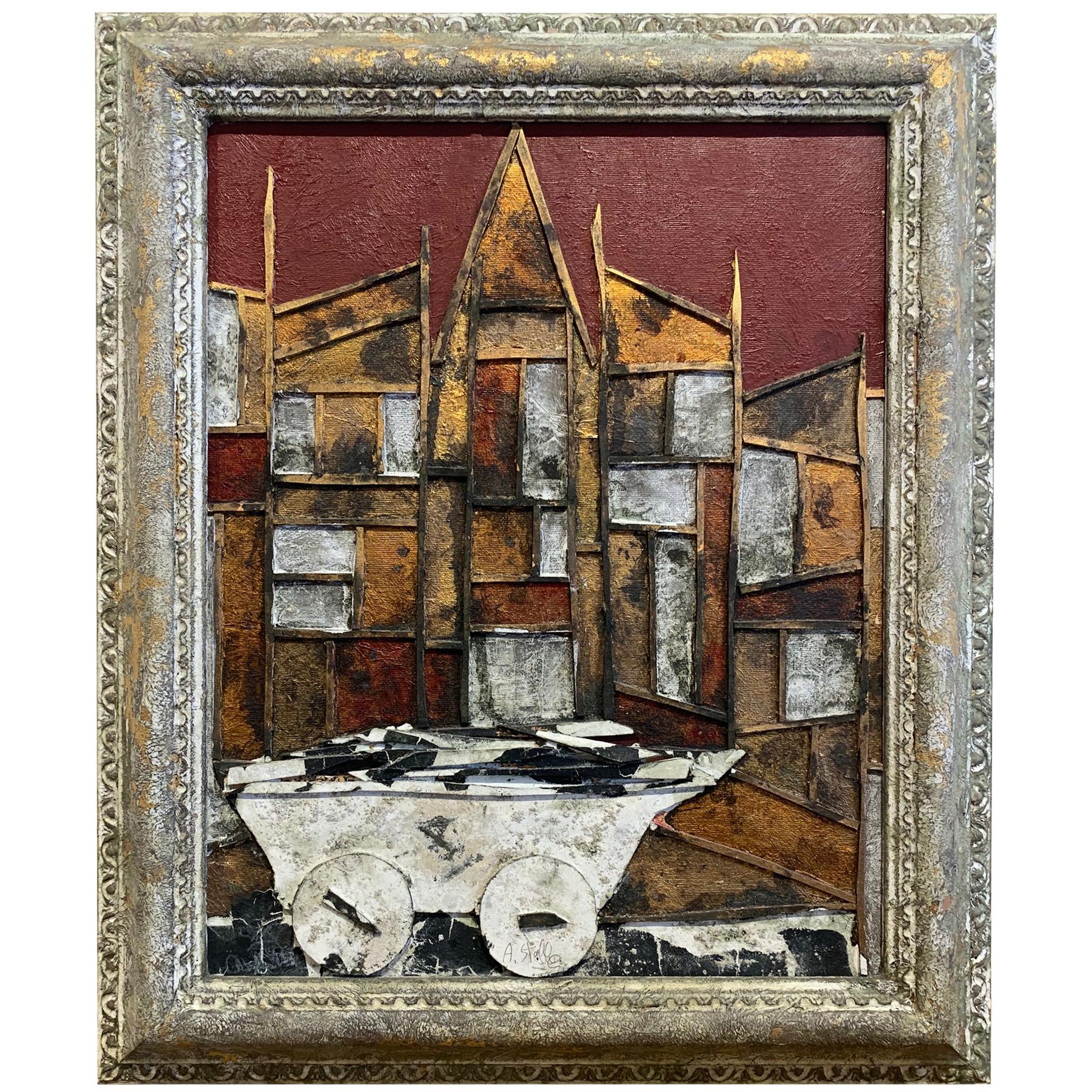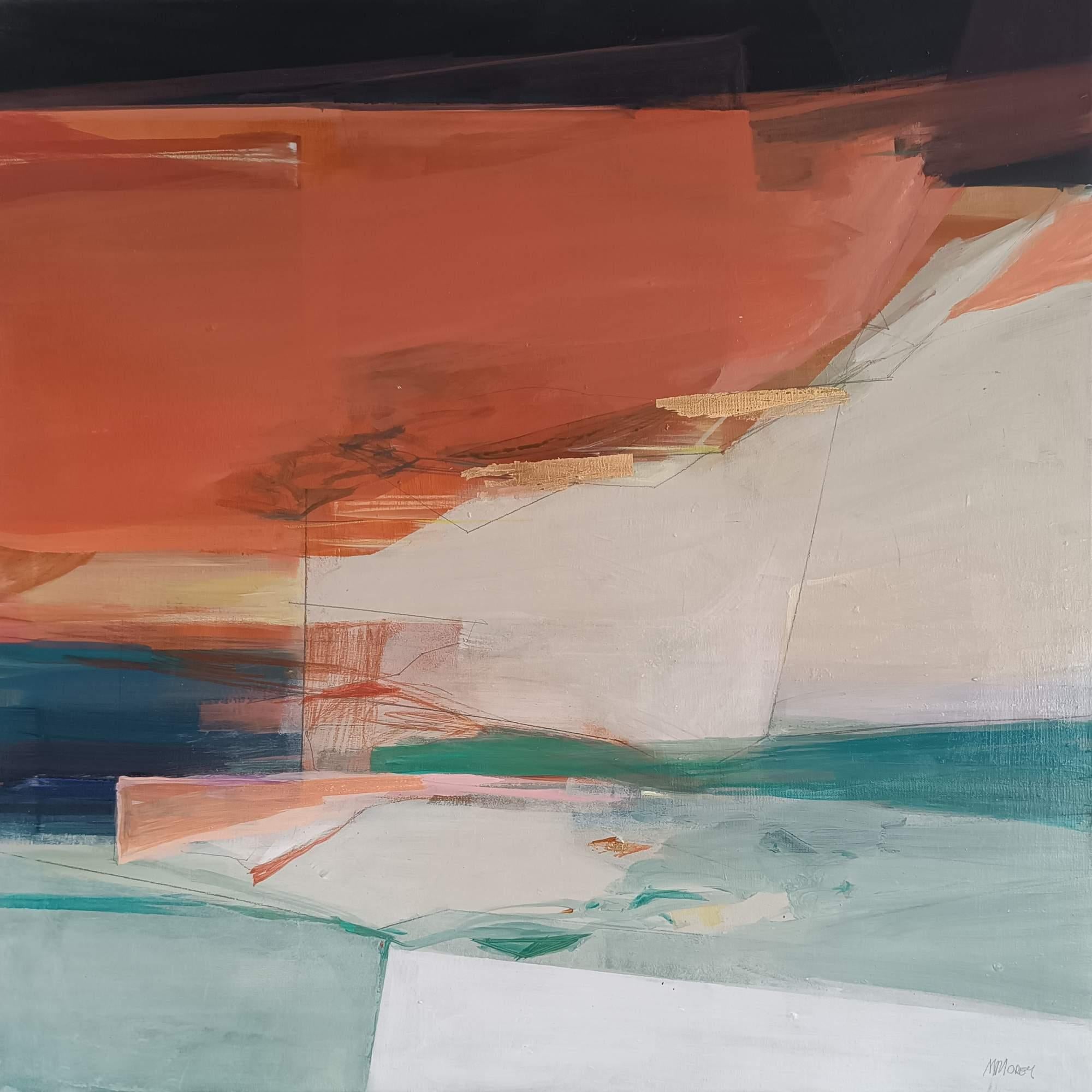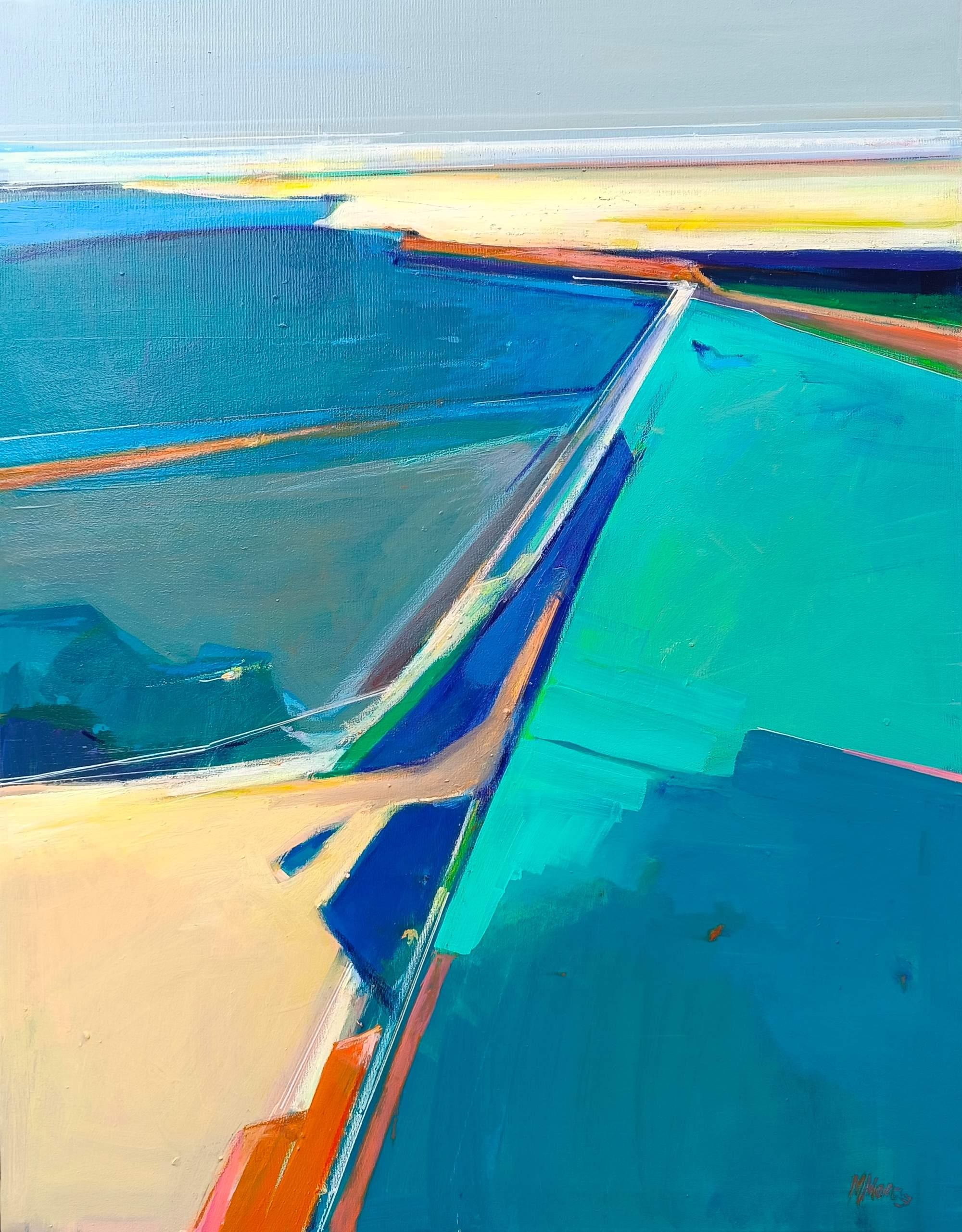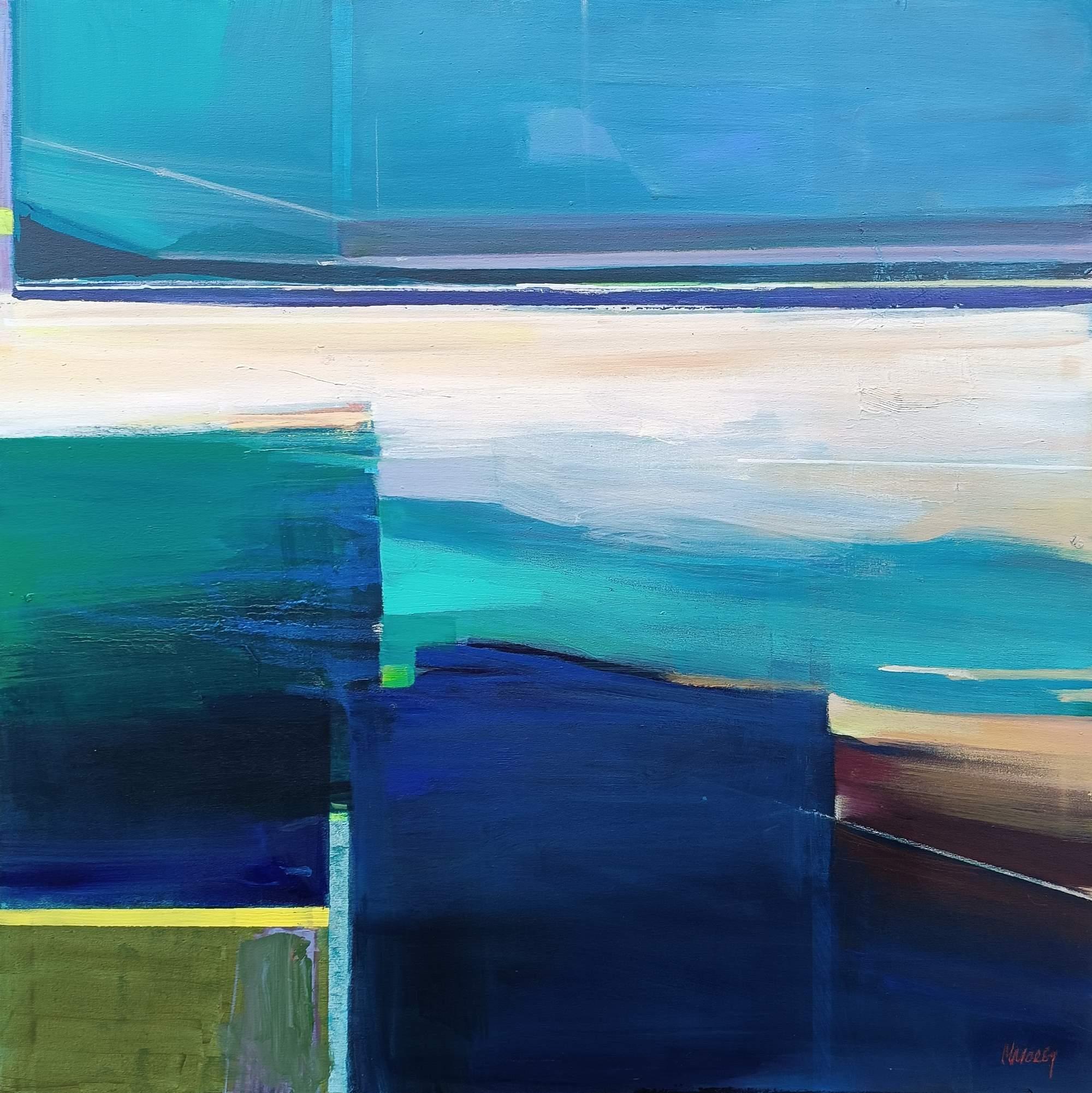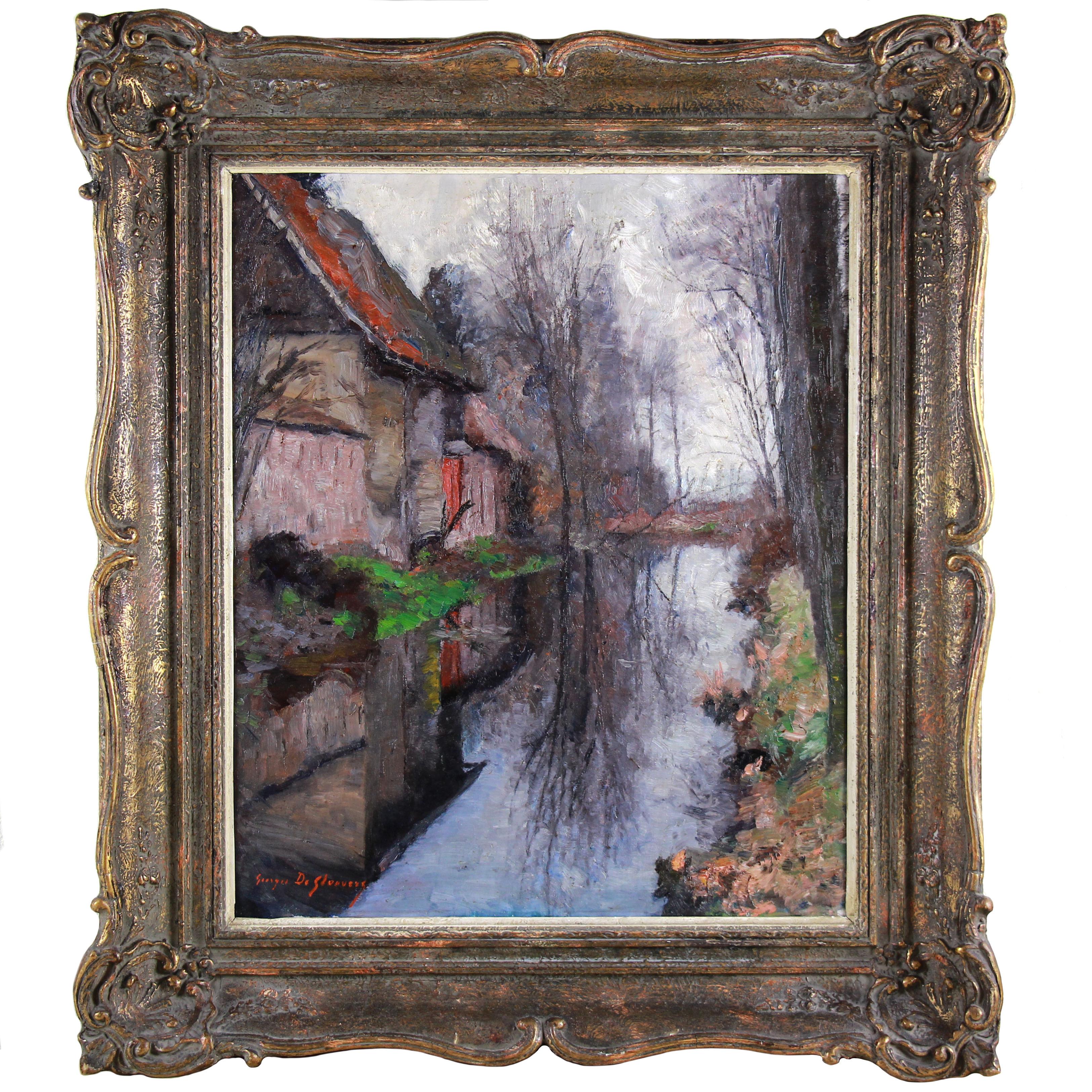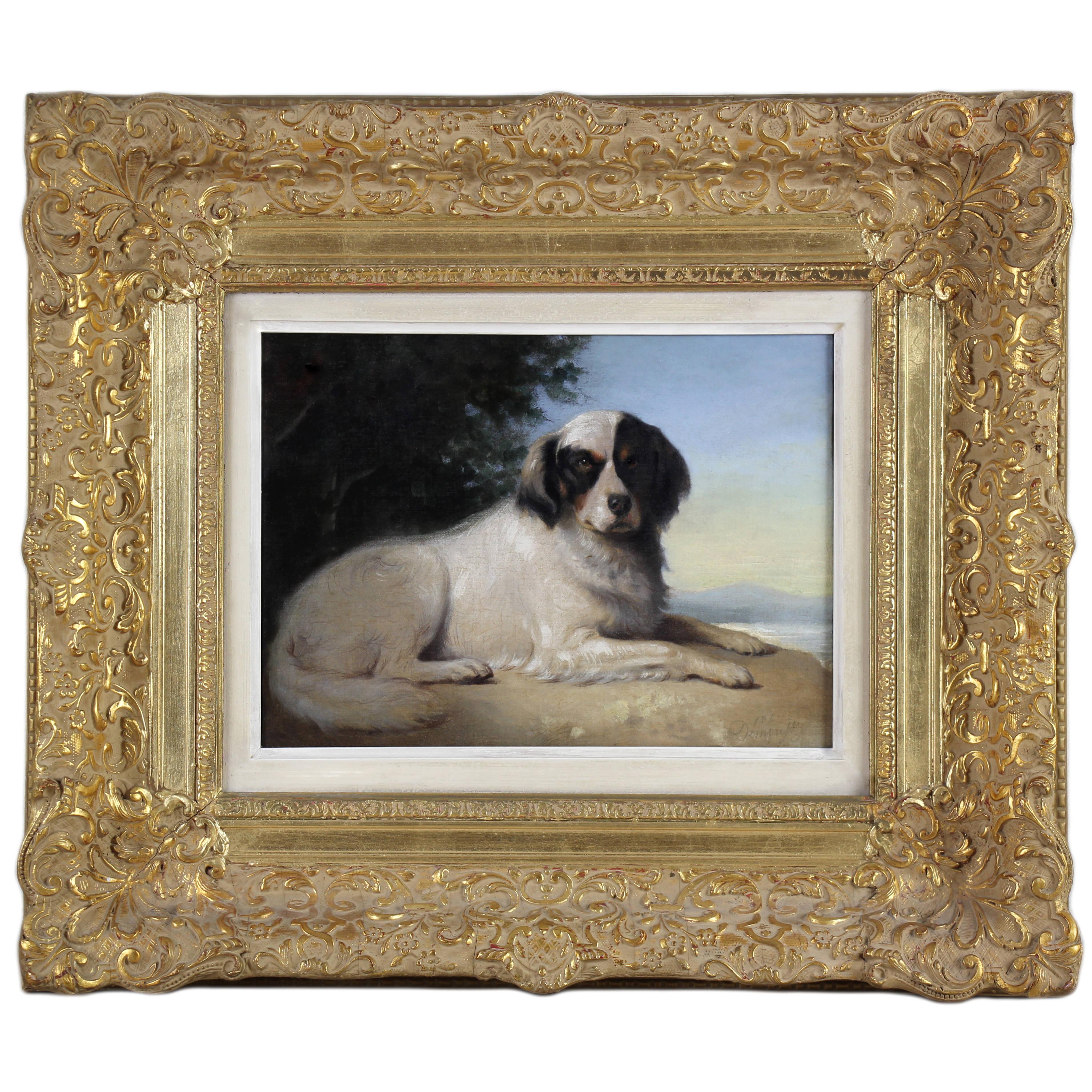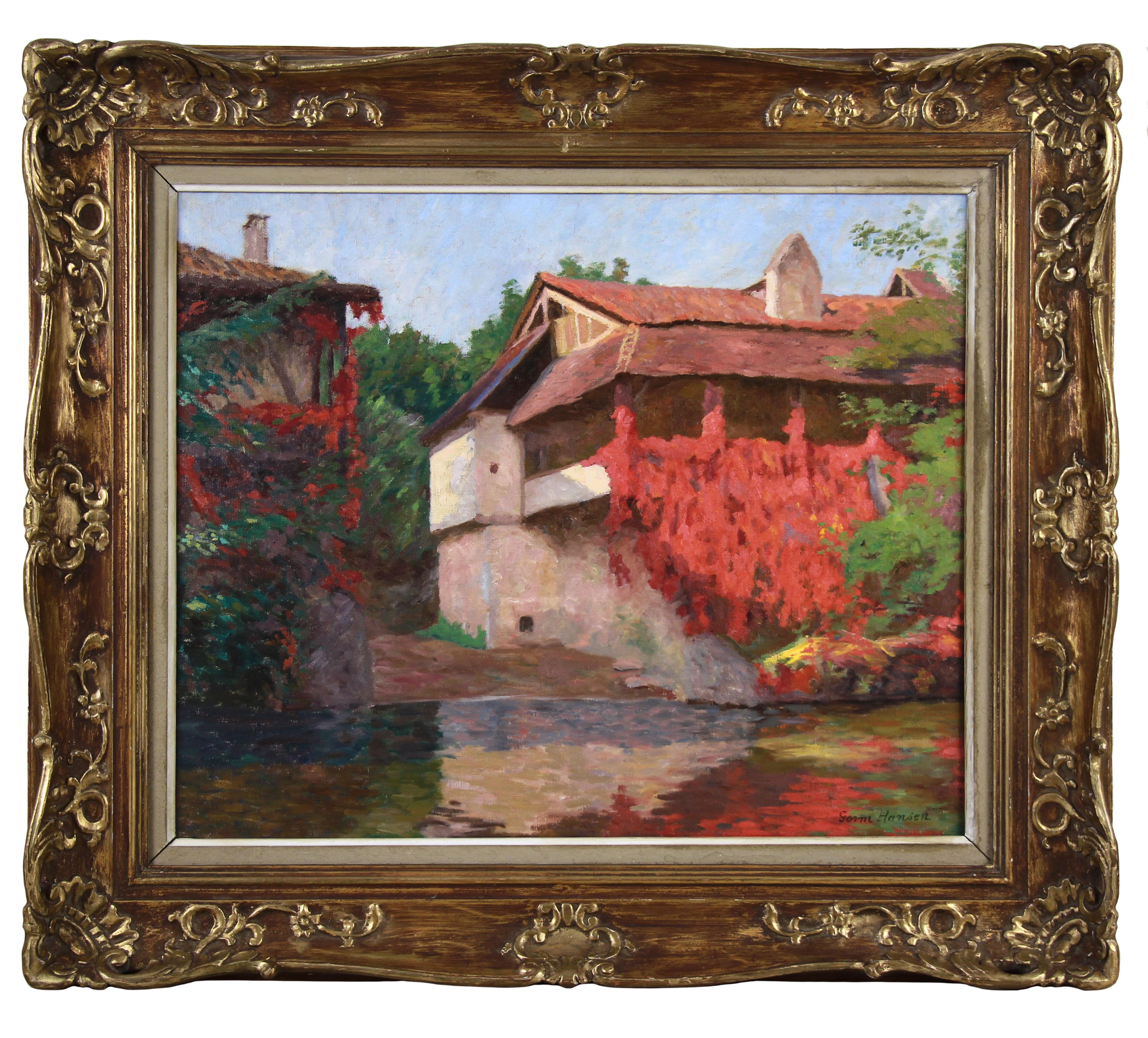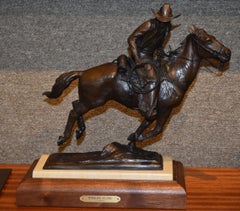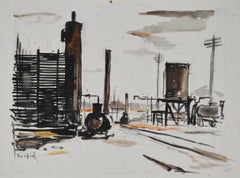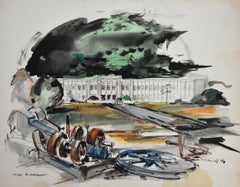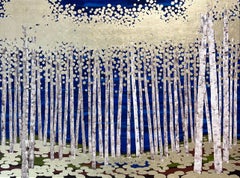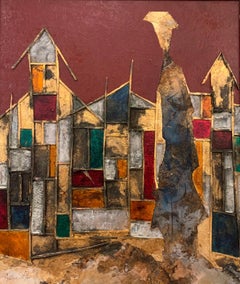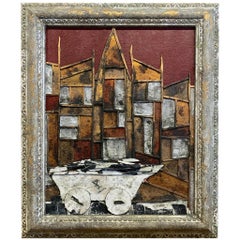Newcomb Macklin Hand Carved Gold Leaf Frame. Fits 25 x 30 Painting. Ext. 30 x 35
Want more images or videos?
Request additional images or videos from the seller
1 of 18
Newcomb Macklin Frame Co.Newcomb Macklin Hand Carved Gold Leaf Frame. Fits 25 x 30 Painting. Ext. 30 x 35Circa 1920s
Circa 1920s
About the Item
About the Seller
5.0
Vetted Professional Seller
Every seller passes strict standards for authenticity and reliability
Established in 1974
1stDibs seller since 2017
93 sales on 1stDibs
Typical response time: 2 hours
Authenticity Guarantee
In the unlikely event there’s an issue with an item’s authenticity, contact us within 1 year for a full refund. DetailsMoney-Back Guarantee
If your item is not as described, is damaged in transit, or does not arrive, contact us within 7 days for a full refund. Details24-Hour Cancellation
You have a 24-hour grace period in which to reconsider your purchase, with no questions asked.Vetted Professional Sellers
Our world-class sellers must adhere to strict standards for service and quality, maintaining the integrity of our listings.Price-Match Guarantee
If you find that a seller listed the same item for a lower price elsewhere, we’ll match it.Trusted Global Delivery
Our best-in-class carrier network provides specialized shipping options worldwide, including custom delivery.More From This Seller
View All"WORKING AS ONE" COWBOY WESTERN BRONZE ORIGINAL STUDIO COPY
By G. Harvey
Located in San Antonio, TX
G. Harvey (Gerald Harvey Jones)
(1933-2017)
San Antonio, Austin, and Fredericksburg Artist
Image Size: 16 x 15 tall
Medium: Bronze Sculpture / Studio Copy
1984
"Working as One"
G. Harvey, known for paintings closely linked in mood and subject matter to Edouard Cortes [1882-1962], G Harvey creates romanticized street scenes of turn of the century towns in America. Rain slick streets reflect urban lights, and the weather is obviously cold. He grew up in the rugged hills north of San Antonio, Texas from where herds of longhorn cattle were once driven up dusty trails to the Kansas railheads. His grandfather was a trail boss at 18 and helped create an American legend for his grandson. So, the American West is not only the artist's inspiration but his birthright. Harvey's early interest in sketching and drawing slowly evolved into a passion for painting in oils. After graduating cum laude from North Texas State University, Harvey took a position with the University of Texas in Austin, but he soon realized that weekends and nights at the easel did not satisfy his love of painting. He abandoned the security of a full-time job in 1963 and threw his total energy into a fine art career. Harvey paints the spirit of America from its western hills and prairies to the commerce of its great cities. His original paintings and bronze sculptures are in the collections of major corporations, prestigious museums, the United States government, American presidents, governors, foreign leader and captains of industry. The Smithsonian Institution chose Harvey to paint The Smithsonian Dream, commemorating its 150th Anniversary. The Christmas Pageant of Peace commissioned Harvey to create a painting celebrating this national event. He has been the recipient of innumerable awards and the subject of three books. Today, G. Harvey lives in Fredericksburg, Texas, with his wife Pat in a 150-year-old stone home built by German settlers. His studio and residence are nestled within the Historic District of Fredericksburg. It is obligation of fine artists to present us with more than pretty pictures. They must also make us feel. Among the western painters of today, there is none more capable of accomplishing this than G. Harvey. In his paintings, the viewer into only sees the physical elements of his subject, but also senses the mood that surrounds them. It is a remarkable aspect of fine art, which few artists are able to master. Gerald Harvey Jones was born in San Antonio, Texas, in 1933. His grandfather was a cowboy during the trail-driving era when legends grew up along the dusty trails north from Texas. Family stories of wild cattle and tough men were absorbed by a wide-eyed boy and became the genesis of G. Harvey's art. A graduate in fine arts at North Texas State University, Harvey taught full-time and painted nights and weekends for several years. It was through painting that he found his greatest satisfaction, and his native central Texas hill country provided the inspiration for most of his earliest work. With the development of his talent and the growth of his following, Harvey began to expand his artistic horizons. He left teaching and concentrated on a career in fine art. He sought the essence that is Texas and found it not only along the banks of the Guadalupe, but in cow camps west of the Pecos, and in the shadows of tall buildings in big Texas cities. The streets of Dallas once echoed with the sound of horse's hooves and the jingle of spurs. Historic photographs reveal what it looked like, but only an artist like Harvey can enable a viewer to experience the mood and flavor or the time. Contemporary west art has too often centered on the literal representations from its roots in illustrations. Artists like G. Harvey take us a step further, to the subjective impressions that are unique to each great talent, and which constitutes something special and basic to fine art expression. Harvey is a soft-spoken and unassuming man who cares deeply about what he paints without becoming maudlin or melodramatic. We sense there is more in each Harvey painting than just that which is confined to the canvas. Resources include: The American West: Legendary Artists of the Frontier, Dr. Rick Stewart, Hawthorne Publishing Company, 1986 Artist G. Harvey grew up in the rugged hills north of San Antonio, Texas from where herds of longhorn cattle were once driven up dusty trails to the Kansas railheads. His grandfather was a trail boss at 18 and helped create an American legend. So, the American West is not only the artist's inspiration but his birthright. Harvey's early interest in sketching and drawing slowly evolved into a passion for painting in oils. After graduation cum laude from North Texas State University, Harvey took a position with the University of Texas in Austin, but he soon realized that weekends and nights at the easel did not satisfy his love of painting. He abandoned the security of a full-time job in 1963 and threw his total energy into a fine art career. Two years as a struggling artist followed, but 1965 brought acclaim for the artist's first prestigious show, The Grand National exhibition in New York, and the American Artists' Professional League presented him with their New Master's Award. President Lyndon Johnson discovered his fellow Texan's talent, became a Harvey collector and introduced John Connally to the artist's work. Connally was enthusiastic about Harvey's art, and, on one occasion, he presented a G. Harvey original to each governor of Mexico's four northern states. Harvey paints the spirit of America from its western hills and prairies to the commerce of its great cities. His original paintings and bronze sculptures are in the collections of major corporations, prestigious museums, the United States government, American presidents, governors, foreign leader and captains of industry. The Smithsonian Institution chose Harvey to paint The Smithsonian Dream commemorating its 150th Anniversary. The Christmas Pageant of Peace commissioned Harvey to create a painting celebrating this national event. He has been the recipient of innumerable awards and the subject of three books. Through his art, our history lives. Today, G. Harvey lives in Fredericksburg, Texas, with his wife Pat in a 150-year-old stone home built by German settlers. His studio and residence are nestled within the Historic District of Fredericksburg. Gerald Harvey Jones, better known as G. Harvey, grew up in the Texas Hill Country listening to his father and grandfather tell stories about ranch life, frontier days in Texas, and driving cattle across the Red River. Early in his career, he began to draw inspiration from that collective memory for paintings that would eventually earn him the reputation as one of America's most recognized and successful artists. His art is rooted in the scenic beauty of the land he grew up in and the staunch independence of the people who live there. He says, "My paintings have never been literal representations. They are part first-hand experience, and part dreams generated by those early stories I heard. They are a product of every place I have been, everything I have ever seen and heard." G. Harvey graduated from North Texas State University. He taught in Austin, but continued to study art in his spare time, eventually devoting full time to his painting. The year 1965 was a turning point when he won the prestigious New Masters Award in the American Artist Professional League Grand National Exhibition in New York. It is often said that in viewing a work of art, one is granted a unique look into the thoughts and expressions of values that give meaning to the artist work. Nowhere does this ring truer than the art of G. Harvey. Though Harvey has had nearly two decades of sell-out shows, an outstanding honor came with a series of one-man shows in Washington, D.C. in 1991. The first was at the National Archives featuring his paintings of the Civil War era, then a selection of paintings of notable Washington landmarks was exhibited at the Treasury Department, culminating in a one-man show of 35 paintings at the Smithsonian Institution during their exhibition of The All-American Horse. His work was featured in Gilcrease Museum exhibitions from 1992-1997. In 1987 his alma matter honored him with a Distinguished Alumni Award. One of Harvey's paintings was featured on the cover of Smithsonian Institution's 150th anniversary engagement book. He now has four books published and resides with his family in The Texas Hill Country. integrity, strength, courage, faith, heritage - these are compelling words that have often been used by collectors and art critics alike to describe that intrinsic value that courses through every original painting or sculpture by artist G. Harvey. Whether drawing inspiration from his own deeply rooted Texas heritage or his world travels with wife Patty, the human experience is fully revealed in his art. He is often credited with technical brilliance as his goal is to approach each subject with discipline, maturity and artistic integrity. Yet beyond this vast and well-schooled knowledge, is a deeper set of values, an inner luminosity that transcends time and place, evoking familiar sights, sounds, moods and emotions. Harvey grew up in San Antonio, Texas. He resides now in Fredericksburg, Texas where he lives in a 150-year-old stone home built by German settlers. Lyndon Johnson introduced his works to John Connally who presented a G Harvey original to the governors of four Northern Mexican states. He celebrated a one-man show at the Smithsonian Institution entitled The All-American Horse. Harvey has always believed that history lives through art including the epic struggle between the states, the western migration, the brief time when horses and automobiles clattered across cobblestones together. He is faithfully able to capture the drama and feeling of such a moment in time.
Please view my 1stdibs store front for other Great Vintage Texas...
Category
1980s Impressionist Landscape Paintings
Materials
Bronze
"Misty Bayou" HAZE. ONE OF HIS BEST Dated 1917 Alexander Drysdale (1870-1934)
By Alexander John Drysdale
Located in San Antonio, TX
Alexander John Drysdale
(1870-1934)
New Orleans Louisiana / New York Artist
Size: 20 x 30
Frame: 26 x 36
Medium: Oil Wash? Watercolor?
Dated: 1917
"Misty Bayou" Housed in the original magnificent frame.
Alexander John Drysdale (1870-1934) New Orleans Louisiana / New York Artist
Alexander John (A.J.) Drysdale was an early 20th century Louisiana artist who specialized in landscapes using the technique of oil wash, that gave his works a characteristic of a hazy look. Drysdale made use of this technique by diluting the oil paint with kerosene and applying it with cotton balls. Alexander John Drysdale, born in Marietta, Georgia on March 2, 1870, came to New Orleans at the age of fifteen with his parents. His father, Reverend Alexander J. Drysdale, became the rector of Christ Church Cathedral. Alex received private tutoring from a Professor Mehado and art lessons from Ida Hackell at the Southern Art Union. Later in New Orleans (1887) he studied art under Paul Poincy (1833-1909). The exact date of Drysdale's arrival in New York is unknown, but he enrolled in the Art Students League where he received instruction from Charles C. Curran and Frank Vincent DuMond. Apparently, he remained in New York for about five years and did not go to Europe for further study. After some time, Drysdale began specializing in landscapes, executed in a tonalist manner.
Back in New Orleans, Drysdale was inspired by local subjects, especially swamp or bayou areas and other desolate wetlands. Over a period of many years Drysdale's landscapes evolved to a unique stylistic maturity. In 1909 he received a gold medal from the New Orleans Art Association. It is easy to see the influence of two artists that he admired: Corot and Inness. Working equally well in oil and watercolor (he also did scenes in charcoal), Drysdale usually divided his scene into halves or thirds, typically, a foreground consisting of tall swamp grasses achieved with broad vertical strokes; a middle ground consisting of a backdrop row of trees at the horizon line executed with staccato, jabbing strokes resulting in textural contrast; and a background devoted totally to a tonalist-like moisture-laden sky often hazy with no clouds or only a slight indication of them. This formulaic compositional format rendered with an economy of technique resulted in imagery with repetitious forms and shapes diffused in a nebulous space. In this regard, Drysdale's works are impressionistic; he also tended to use the violets and blues of the impressionist palette. Yet he lacked a specific interest in color and light. Although his expression of the Louisiana scenery is very personal, even mystical, the artist appears to have been very limited in subject matter. One of his last works was a mural for the Shushan (New York) Airport administration building, and shortly before his death he was employed as an artist by the Civil Works Administration.
Drysdale was a member of the Arts and Crafts Club of New Orleans, and his work was in the permanent collection of the Delgado Museum for many years. The artist worked at his studio at 320 Exchange Place in the picturesque Vieux Carré until his death at the age of sixty-three. Stewart (in Painting in the South, 1983), describes how Drysdale was a shrewd businessman. He would solicit new homeowners who might need a canvas to decorate a wall, or a cotton broker who recently made the headlines. Drysdale died in New Orleans, on February 9, 1934.
Sources:
Louisiana Artists from the Collection of Dr. and Mrs. James W. Nelson. Baton Rouge, LA: Louisiana State University, 1968; Wiesendanger, Martin and Margaret Wiesendanger, Nineteenth Century Louisiana Painters and Paintings from the Collection of W. E. Groves. New Orleans: W. E. Groves Gallery, 1971, pp. 44-45; Painting in the South: 1584-1980, Exh. cat. Richmond, VA: Virginia Museum, 1983, pp. 106-107, 114, 276; Chambers, Bruce W., Art and Artists of the South: The Robert P. Coggins Collection of American Paintings. Exh. cat. Rochester, NY: Memorial Art Gallery of the University of Rochester, 1984, p. 88; Zellman, Michael David, 300 Years of American Art. Seacacus, NJ: Wellfleet Press, 1987, p. 634; Gerdts, William H., Art across America: Two Centuries of Regional Painting, 1710-1920. New York: Abbeville Press, 1990, vol. 2, pp. 110-111.
Submitted by Richard H. Love and Michael Preston Worley, Ph.D.
Biography from The Johnson Collection
ALEXANDER JOHN DRYSDALE (1870–1934)
Born in Marietta, Georgia, Alexander John Drysdale was the only son of an ordained Episcopal priest whose ministry required frequent moves to parishes in Georgia, Alabama, and Tennessee. In 1883, he accepted the call to become dean of Christ Church Cathedral, New Orleans, and was later elected a bishop. Alexander, thirteen years old when the family settled in New Orleans, began his art studies under the instruction of Ida C. Haskell, a California-born artist who was on the faculty of the recently established Southern Art Union. The local academy had been founded by several leading artists, including Andres Molinary, William Henry Buck...
Category
1910s Impressionist Landscape Paintings
Materials
Mixed Media
"OIL FIELD" PERSON FILLING OIL TRUCK TANKS
By Buck Schiwetz
Located in San Antonio, TX
Buck Schiwetz
(1898-1984)
Houston Artist
Image Size: 9 x 11.75
Frame Size: 15.25 x 17.75
Medium: Watercolor on Paper
"Oil Field"
Buck Schiwetz (1898-1984)
Edward Muegge Schiwetz was a painter whose work recorded the state of Texas from the country to the city. In addition, Schiwetz was a magazine illustrator, graphic artist, writer, preservationist, and architect.Edward Schiwetz was born and raised in Cuero, Texas and learned to draw and paint under the instruction of his mother. He graduated from Cuero High School (1916) and received a baccalaureate in architecture from Texas A & M college, College Station...
Category
20th Century Impressionist Landscape Paintings
Materials
Watercolor
"TALCO SCHOOL" TALCO HIGH SCHOOL TEXAS
By Buck Schiwetz
Located in San Antonio, TX
Buck Schiwetz
(1898-1984)
Houston Artist
Image Size: 10.5 x 14
Frame Size: 17 x 20.5
Medium: Watercolor on Paper
Dated 1946
"Talco School" High School Talco Texas
Buck Schiwetz (1898-1984)
Edward Muegge Schiwetz was a painter whose work recorded the state of Texas from the country to the city. In addition, Schiwetz was a magazine illustrator, graphic artist, writer, preservationist, and architect.Edward Schiwetz was born and raised in Cuero, Texas and learned to draw and paint under the instruction of his mother. He graduated from Cuero High School (1916) and received a baccalaureate in architecture from Texas A & M college, College Station...
Category
1940s Impressionist Landscape Paintings
Materials
Watercolor
"POWERLINES" ART ALSO ON BACK OF PAINTING. INDUSTRIAL SUBJECT
By Buck Schiwetz
Located in San Antonio, TX
Buck Schiwetz
(1898-1984)
Houston Artist
Image Size: 11.25 x 13.5
Frame Size: 17.75 x 19.5
Medium: Watercolor on Paper
Dated 1951
"Powerlines"
Buck Schiwetz (1898-1984)
Edward Muegge Schiwetz was a painter whose work recorded the state of Texas from the country to the city. In addition, Schiwetz was a magazine illustrator, graphic artist, writer, preservationist, and architect.Edward Schiwetz was born and raised in Cuero, Texas and learned to draw and paint under the instruction of his mother. He graduated from Cuero High School (1916) and received a baccalaureate in architecture from Texas A & M college, College Station...
Category
1950s Impressionist Landscape Paintings
Materials
Watercolor
"RIVER BEND" OIL ON CANVAS APPLIED BY PALETTE KNIFE
By Jose Vives-Atsara
Located in San Antonio, TX
Jose Vives-Atsara
(1919-2004)
San Antonio Artist
Image Size: 16 x 20
Frame Size: 25 x 28.75
Medium: Oil on Canvas Applied by Palette Knife
"River Bend"
Biography
Jose Vives-Atsara (1919-2004)
His list of Pallbearers says it all. They were not just buyers of his art they were some of his closest friends.
Pallbearers: E. Glenn Biggs, James M. Cavender, III, Tom C. Frost, Jr., James W. Gorman, Jr., George B. Irish, Joseph R. Krier, Robert L. Mooney and H. Bartell Zachry, Jr.
Jose Vives-Atsara was born April 13, 1919, in Villafranca del Penedes near Barcelona, Spain. A native Spaniard, he developed a love of painting at an early age, and by age 11 had committed himself to becoming an artist. He studied at Colegio de San Ramon and had his first one-person show at age 14.
The Spanish Civil interrupted his idyllic young life as he was forced to serve in the Communist Army, and then was imprisoned, suffering many hardships.
Soon after the war he married Emilia Hill Domenech, and in 1947 set out to move with his wife and child aboard a tramp steamer to the United States. Unfortunately, immigration quotas did not allow them to move directly to the United States, and it was eight years before they achieved that goal. During this interim before obtaining temporary visas, he and his family lived first, in Caracas, Venezuela and then in Mexico City, Mexico.
The family settled in San Antonio, Texas, where he had made friends on a previous visit. He and his wife and children gained citizenship in time for their first Christmas in the United States. He became such an exemplary immigrant citizen that officials of the U.S. District Court for the Western District Court regularly invited him to share his thoughts and advice for living in America with newly naturalized citizens
Vives-Atsara also developed a close relationship with the Incarnate Word College, becoming, over the years, both a professor of art, and Artist in Residence. As a painter, he depicted many local scenes including San Antonio missions and the San Antonio River. For special guests such as Pope John Paul II, heads of state, and royalty from foreign countries, he was commissioned to provide paintings as gifts.
His paintings were also commissioned for Frost Bank and the San Antonio Chamber of Commerce. For his vibrant oil paintings, he used only nine colors, mixed in a variety of ways. They have been described as both realistic and impressionistic.
"Vives-Atsara believed that art is a reflection of the artist's soul, if this is true; his paintings reflect a beautiful, bright spirit." (Richardson) Jose Vives-Atsara died in San Antonio on January 13, 2004 and is buried there in Sunset Memorial Park Mausoleum.
Jose Vives-Atsara was born in Vilafranca del Panades in the Catalonian region of Spain on April 30, 1919. As a small boy he loved to sketch with pencil and paper. He began painting at the age of eleven. His first one-man show came at the ripe old age of fourteen. From that time on, painting has been his love and his way of life.
Jose studied art at Saint Raymond College and School of Fine Arts in Barcelona. He is quick to admit that his most inspirational teacher has been nature itself.
Mr. Vives-Atsara came to San Antonio in 1956 where he has established his art career. His use of a palette knife in painting allows him to blend rich pure pigments to achieve his goal of creating a powerful statement of color directly on the canvas. This style is intended to produce works that are distinctively 'Vives-Atsara'.
Vives-Atsara is represented in public collections including the Museum of Modern Art, Spain; Fort Worth Art Museum, Texas; His Royal Highness Juan Carlos...
Category
20th Century Impressionist Landscape Paintings
Materials
Oil
You May Also Like
Good Night 4854
By Kate Salenfriend
Located in Napa, CA
Surrounded by artistic inspiration from a very early age, Kate Salenfriend learned most of her technical skills from her great-grandfather, Stewart Robertson, the registered Californ...
Category
21st Century and Contemporary Contemporary Landscape Paintings
Materials
Gold Leaf
The Magical Village - Andrea Stella - Landscape Abstract Painting - Mixed Media
Located in Carmel, CA
Andrea Stella (1950-2019).
The child of Greek immigrants raised in Italy, Andrea was destined to create.
His first concentration in the art world was antique woodworking, which lead...
Category
2010s Contemporary Mixed Media
Materials
Gold Leaf
$5,520 Sale Price
20% Off
Story of the Poet - Andrea Stella - Landscape Abstract Painting - Mixed Media
Located in Carmel, CA
Andrea Stella (1950-2019).
The child of Greek immigrants raised in Italy, Andrea was destined to create.
His first concentration in the art world was antique woodworking, which lead...
Category
2010s Contemporary Mixed Media
Materials
Gold Leaf
$3,600 Sale Price
20% Off
Rolling On Currents of Time
By Thomas Swanston
Located in Atlanta, GA
This painting is in excellent condition and has only been shown in a gallery setting. Please note that given the characteristics of the silver and gold leafing the work will photogr...
Category
2010s Contemporary Landscape Paintings
Materials
Gold Leaf
Dawn at Merzouga (L'Aurore a Merzouga) - Abstract landscape oil painting
By Wafaa Mezouar
Located in East Quogue, NY
Stunning signed abstract landscape painting by Moroccan artist Wafaa Mezouar. Acrylic paint and gold leaf on canvas.
Size 52 x 48 inches. Offered unframed,
Exhibitions include: C...
Category
Early 2000s Abstract Abstract Paintings
Materials
Gold Leaf
El Sonido Del Mar 2 - original abstract landscape painting - Contemporary art
By Magdalena Morey
Located in London, Chelsea
This exceptional artwork is currently on display and available for sale at Signet Contemporary Art Gallery and online.
"El Sonido del Mar 2" continues Morey’s exploration of the sea...
Category
21st Century and Contemporary Abstract Expressionist Abstract Paintings
Materials
Gold Leaf
Recently Viewed
View AllMore Ways To Browse
French Mirrored 1920 1940
Art Deco Frame 5x7
English Portraits 16th Century
Art Deco Metal Picture Frame
Dutch Art Deco Side Table
16th Century Portrait Picture Frame
Antique Gilded Floor Mirror
Antique Fire Fan
Antique White Floor Mirror
Deco Mirror Silvered 1925
John Newcomb
Carved Wood Mirror Mexican
John Kendall
Stanford Antiques
17th Century Italian Renaissance Mirror
Louis Xiii Fire
35 X 5 Picture Frame
Art Specialty Company Chicago
